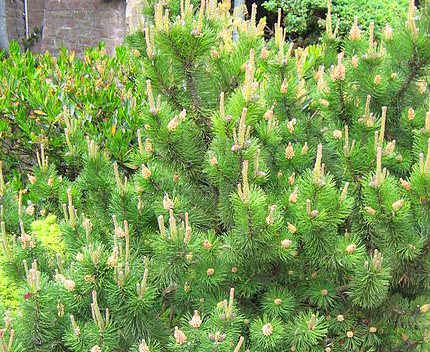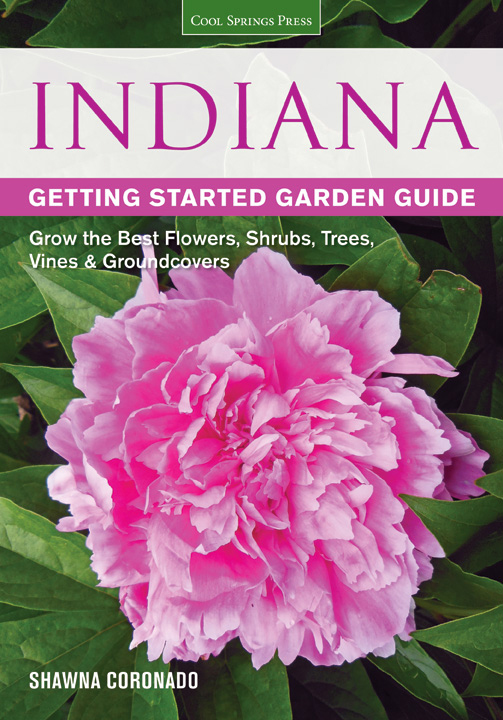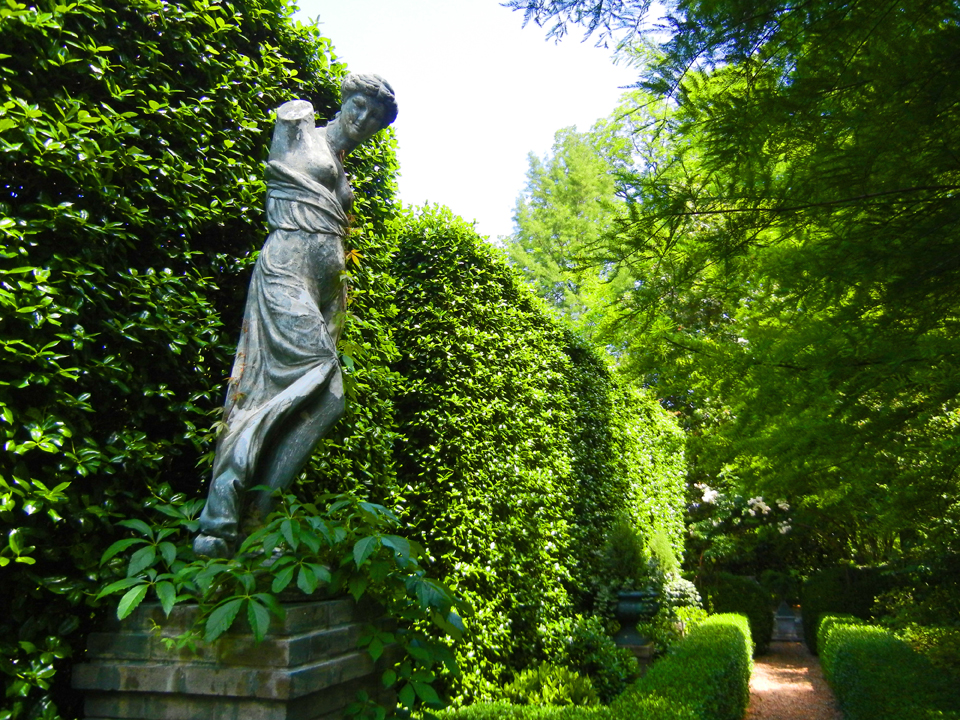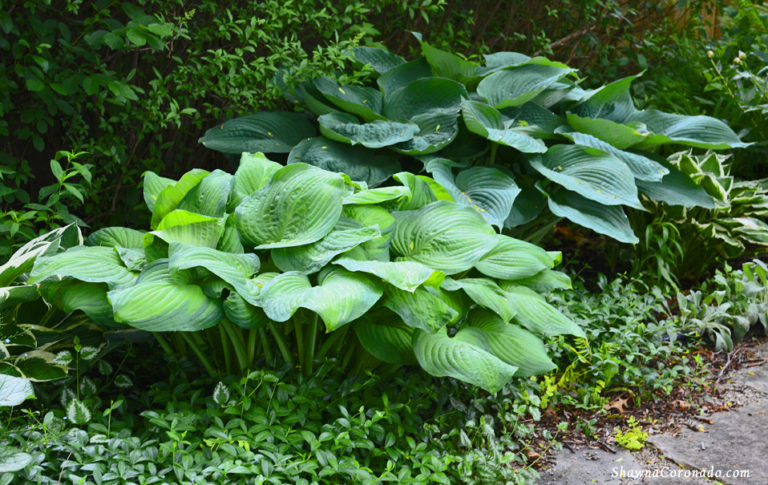Mugo Pine (Pinus mugo) for Winter Garden Interest
Need a break from all that holiday insanity? How about a glimpse of what you could plant next season for absolutely adorable winter garden interest – a Mugo Pine. While there are many varieties of pine, the most quant in your winter garden landscape are definitely the little dwarf varieties that can be quite small. Most mugo’s have a rounded shape, but can be shaped much like a bonsai – all angles and interesting forms. When snowdrops on the pine, the green colors of the needle peek through to continue showing interesting variety in the landscape. Below is a page from one of my latest books, the Indiana Getting Started Garden Guide, which will give you an idea of how to keep the pines in your landscape garden.
- Mugo Pine Botanical Name – Pinus mugo
- Other Name – Swiss Mountain Pine
- Bloom Period and Seasonal Color – Evergreen foliage
- Mature Height x Spread – 1 to 10 feet X 1 to 20 feet
- Botanical Pronunciation – PYE-nus MYOO-go
- Added Benefits – Drought Tolerant, Deer Resistant, Fall Color
- Sun Requirements – Sun, Part Sun
While attractive all four seasons, mugo pines are the darlings of the winter season because of their consistent attractive evergreen needles. They are particularly good shrubs for city or industrialized areas because they tolerate pollution well and grow in a wide variety of soils including sandy and clay conditions. Mugo pines prefer cooler summers and like moisture, but cannot tolerate wet soil. Purchasing this shrub can sometimes be frustrating because seed produced plants do not always grow true to the parents size. Be sure to purchase plants that are hybridized and ask questions about the plants lineage at the nursery in order to have more consistent and expected growth. It has a lovely pine scent and can be used as a bonsai plant.
When, Where, and How to Plant – Plant mugo pine in spring or fall in a location that has full sun and moist, well-drained soil. Amend the soil with organic matter and a couple buckets of gravel if it needs increased drainage. Balled and burlapped plants should have as much of the burlap and wire basket removed as possible. Water the root ball and backfill well. Place the rest of the soil around the root ball, forming a “well” at the base of the plant to help hold moisture.
Growing Tips – Mulch the soil with a 2 to 3 inch layer of compost or organic matter, being cautious not to smother the shrub’s trunk. Water regularly the first season to help establish the shrub, once it is established it will handle drought well. Cautiously apply fertilizer because mugo pine can suffer fertilizer burn. Prune mugo pine to remove dieback or to shape the plant and keep it within bounds.
Advice and Care – Shrubs overcrowded or planted in shadier, wet conditions are vulnerable to blight and other fungal issues. Treat with an OMRI certified fungicide that contains the streptomyces lydicus bacteria. Pine sawflies and other insect pests can attack the mugo pine. Treat with an insecticidal soap and water spray.
Companion Planting and Design – Mugo pine can be used as a wonderful low maintenance design solution in city settings, xeric landscapes, and Japanese gardens. Plant as a feature plant or en masse and be sure to consider the winter snow when planting; mugo pines look beautiful in a winter garden. Mugos are often used as bonsai plants and are relatively easy to train into shapes.
Try These – ‘Teeny’ is a small dwarf mugo pine growing only 18 inches tall and round. ‘Carsten’s wintergold’ has a small stature; only 12 inches high and turns a gold tone when colder weather arrives. ‘Mops’ has a rounded form and grows to 5 feet. ‘Jakobsen’ is only 2 feet tall, has interesting branching and resembles a bonsai trained plant in its natural state. ‘Big tuna’ grows to 8 feet tall. If you would like more ideas on how to grow all types of plants in the Midwest, please pick up my latest book, the Indiana Getting Started Garden Guide online or at a book store. Thanks!







I love mugo pine as an indispensable landscape plant for sure. Where I live, it’s literally white 5-6 months out of the year so any small, mounding and evergreen landscape shrub is most welcome. Especially one as tough as this one!